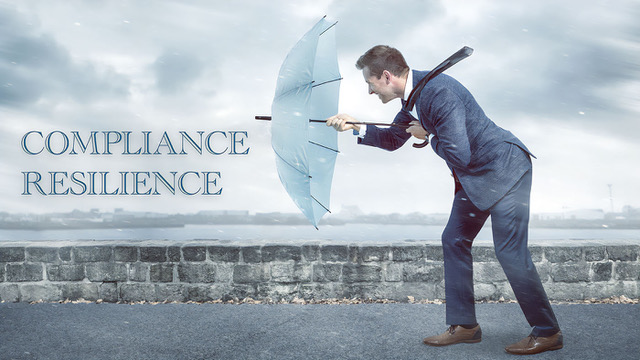by Alessandro Cerboni
Organisations are complex dynamic systems and for these it is necessary to strengthen Compliance Resilience. When we talk about interactions between agents (people) of a complex system such as an organisation, we most commonly refer to concepts of complex systems theory or simulation systems, which are disciplines created to study and move in complex dynamic systems. Complex systems theory studies the structure and behaviour of systems composed of many interacting parts.
Interactions can be complex and lead to emergent behaviours that cannot be easily predicted just by examining individual parts.
The simulation models of complex systems such as the System Dynamics or the Agent Simulation (or ABS – Agent Based Simulation) are used to create Dynamic Digital twin which allow examining the strategic interactions between agents with limited rationality (but mistakenly considered rational) and, the decisions that these agents make in order to adapt their own position and the collective one that emerges from their interactions to a state of dynamic equilibrium.
When we study the structure and behaviour of these complex systems, we are trying to understand how all the parts interact with each other. It’s like solving a big puzzle, where each interaction plays an important role and how it manifests itself affects the entire system. This helps you see how one person’s decisions or one party’s actions can have ripple effects throughout the system.
This type of study is called ‘complex systems theory’ and helps us better understand the world around us, especially when many different parts work and interact together. For this reason, adopting a reductionist and rationalistic approach to complex systems such as organisations is a mistake that can lead to disastrous effects.
This applies even more to risk assessments and, for example, limiting the concept of compliance to the measurement of a hypothetical risk is extremely misleading. Compliance, at most, can be expressed as a degree of resilience with respect to the occurrence of interactions that can push one to seek the optimal condition by adopting illicit behaviours.
In this sense we can define the concept of “compliance resilience” of an organisation as its ability to adapt, recover and maintain acquiescent behaviour to rules and regulations despite external or internal challenges that push towards illicit behaviour. This resilience is critical to ensuring that the organisation remains aligned with regulatory and ethical requirements in the long term.
Similarly, the degree of resilience of a society to criminal behaviour indicates its ability to resist, adapt to and mitigate influences that could lead to criminal behaviour within the community. A resilient society seeks to prevent and address the root causes of crime, promoting ethical norms and rules that contribute to maintaining safety and order.
Both concepts underline the importance of developing internal and external mechanisms that allow a system (organisation or society) to face challenges and adhere to compliant behaviours in the long term.
“Compliance Resilience” specifically aims to ensure that an organisation maintains high standards of compliance and integrity even in difficult or unstable situations, similar to how the resilience of a society helps to keep the social fabric healthy and safe.
Fortifying an organisation’s Compliance Resilience involves a series of activities aimed at ensuring continued compliance with rules and regulations. Some key activities that can contribute to strengthening Compliance Resilience let’s look at the main ones and their social analogue:
Continuous Education and Training:
Social Analogy: Community education and training programs on ethical norms and legal behaviour.
Continuous Monitoring and Audits:
Social Analogy: Law enforcement and supervisory bodies that constantly monitor the trend of crime.
Internal Reporting and Complaints System:
Social Analogy: Mechanisms for reporting suspicious or criminal activity in the community.
Risk Assessment and Management:
Social Analogy: Analysis of the root causes of crime and development of preventive strategies based on the results of the analysis.
Effective Leadership and Ethical Commitment:
Social Analogy: Leaders who are charismatic and committed to promoting and maintaining the safety and integrity of the community.
Adoption of Monitoring Technologies and Tools:
Social Analogy: Using advanced technologies for public safety and crime prevention.
Collaboration with Authorities and External Interested Parties:
Social Analogy: Collaboration between organisations, civil society and law enforcement to address security challenges together.
Organisational Agility:
Social Analogy: Community adaptation to social and economic changes to prevent crime.
Creating a Culture of Ethics and Compliance:
Social Analogy: Promotion of a social culture that encourages legality and integrity by internalising the meaning of the laws.
Clear Communication of Policies and Procedures:
Social Analogy: Clearly communicating laws and norms in the community ensuring that they are internalised and become an integral part of the way of thinking.
In both cases, the key is to develop a proactive mindset and integrate practices that promote a culture of compliance and integrity, regardless of external challenges.
These activities help build a robust structure that can withstand pressure and maintain a high level of social and business quality.
In this process I have developed a framework model of heuristic formulas that allows the system to dynamically adapt to change and external pressures without changing its nature oriented towards compliance with laws and regulations.
To see how to do it in practice, nothing better than developing, where possible, digital twins in which the behaviour of the system and its agents can be simulated when negative stimuli arise; and this is valid:
- For the resilience of compliance;
- For the resilience of the social system to the presence of criminal stimuli and pressures.
In order to understand each other, Italy is a country where the presence of organised crime is strong but paradoxically the resilience to criminal behaviour is high and the social fabric, especially in many regions, resists its spread, containing its pervasive expansion.
In the rest of Europe, however, there is no perception and sensitivity of criminal phenomena so despite having rigid social behaviours essentially dictated by formal rules (conformity) they do not notice the expansion of criminal phenomena which find easy spaces in which to take root and thrive while maintaining compliant external behaviour to the strict rules I know.
For this reason, in various tables and locations we are realising that it is necessary to move away from the rigid construction of rules that can easily be included in a series of codified behaviours (also in checklists), that is, which require compliant behaviour, but we need to change towards an internalisation of common ethical principles contained in regulations in order to raise the level of resilience to criminal behaviour and push towards an internal rejection of everything that is illicit. Ultimately, this is what the most enlightened pages of the main religions try to spread.
The author, Alessandro Cerboni, is a Compliance Professional and Consultant. He is one of the authors of our Italian website, www.riskompliance.it.
For further information, consult the following links and/or references:
For “Compliance Resilience”, as mentioned, there is an ongoing heated debate at an international level which is pushing towards a change in the approach to compliance for which there are few publications and all recent:
(1) Building Compliance Resilience in the Changing Regulatory Landscape, MetricStream, November 2023
(2) Resilience: A risk management approach, Overseas Development Institute, 2012
(3) Using Storytelling to Promote Organisational Resilience: An Experimental Study of Different Forms of Risk Communication, SpringerLink, December 2022
(4) Measuring resilience to major life events, ScienceDirect Elsevier, November 2021
(5) Compliance in 2025 – Resilience: A journal of strategy and risk, PWC
(6) The surprising truth about the C-suite star of 2025, PWC
(7) P. Campana, Criminal networks and social resilience, Elgar online, November 2022
(8) A Research Agenda for Social Networks and Social Resilience, Elgar online, November 2022
(9) Community resilience in the face of rising crime and violence, UN Sustainable Development Group, September 2022
(10) Global Organized Crime INDEX, Global Initiative against Transnational Organized Crime
(11) G. Schiano di Colella
In the world, 8 out of 10 people live in countries with high levels of crime, but no reaction, IRPI Media, October 2021
On social resilience to criminal behaviour, however, there are many cases cited in the texts of prosecuting attorney Nicola Gratteri where the reactions of civil society are described in a region pervaded by the criminal phenomenon of the n’drangheta.






